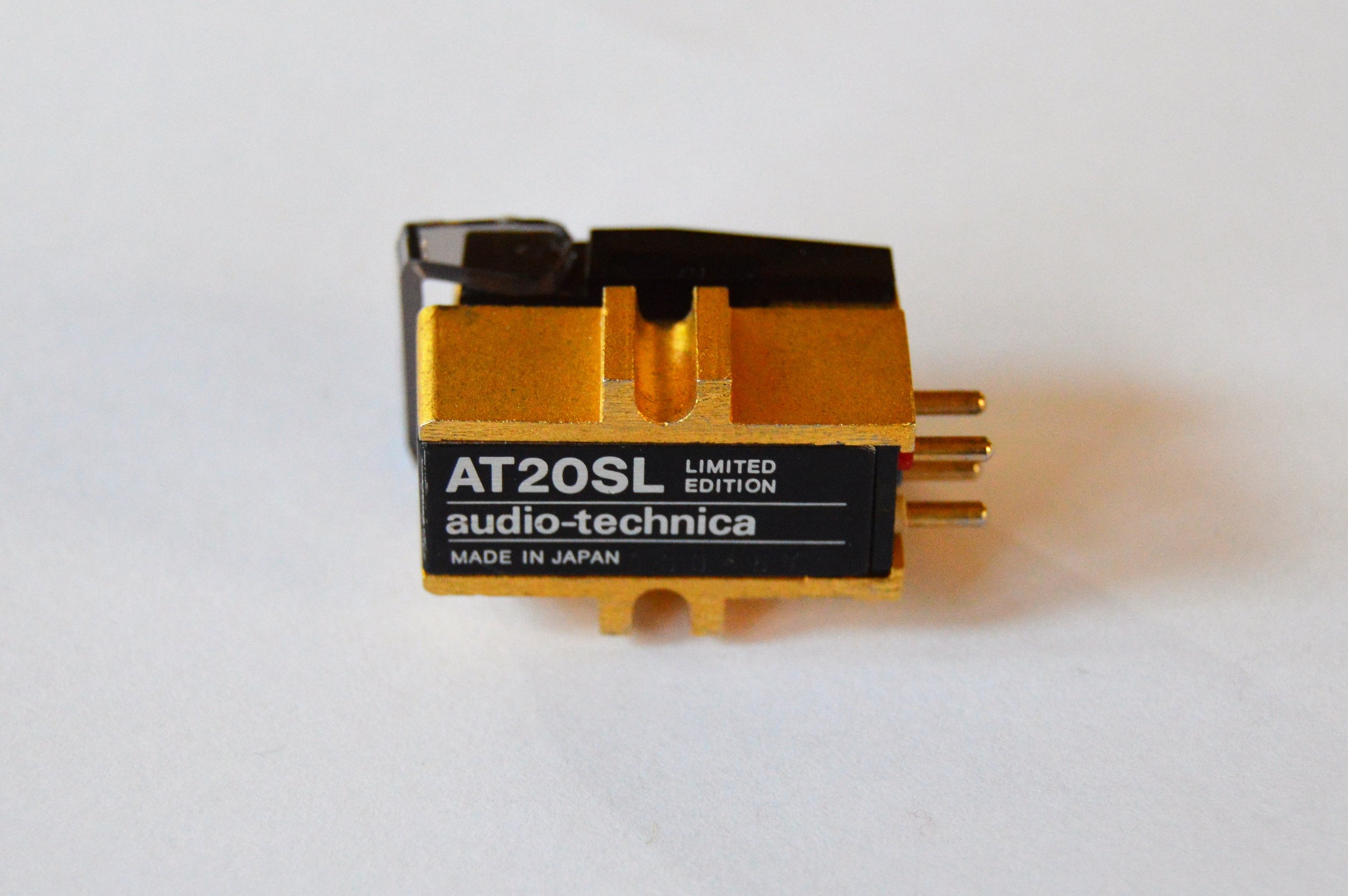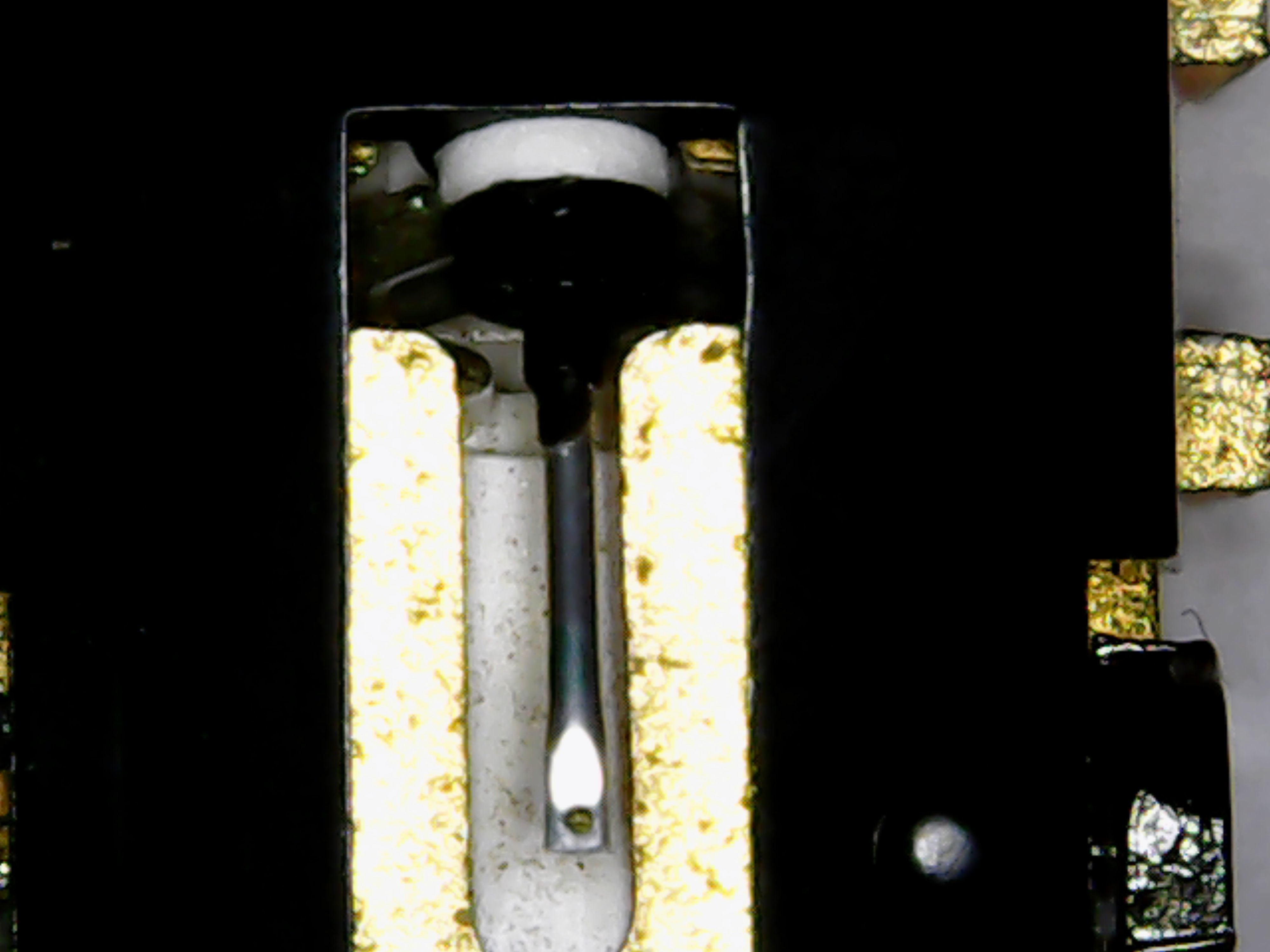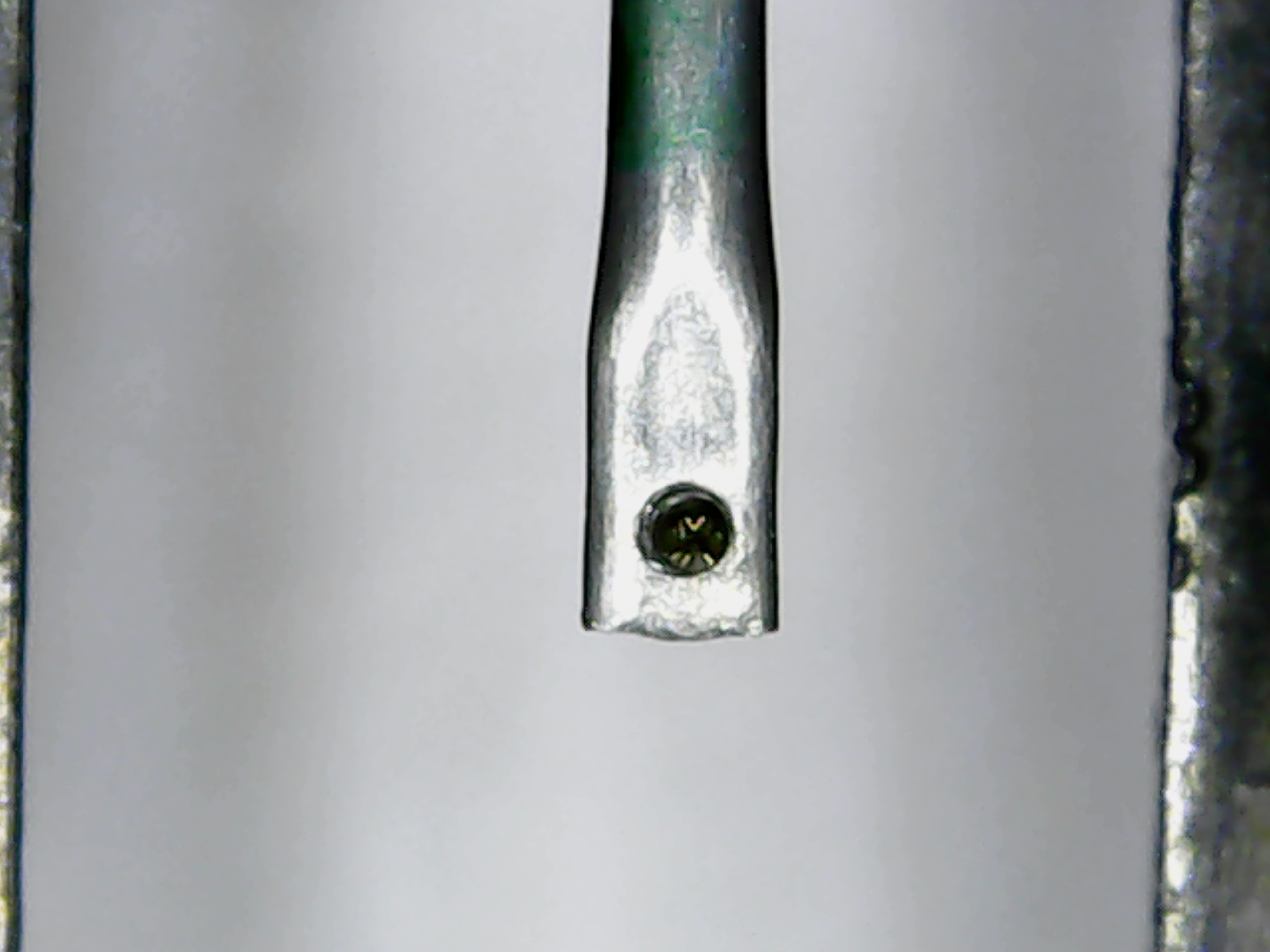|
Home » Audio » Source » Stylus Inspection
|
|
|
|
|
|
|
|
|
|
|
|
| Re: Stylus Inspection [message #89367 is a reply to message #89356] |
Sat, 15 December 2018 17:51   |
 |
 Wayne Parham
Wayne Parham
Messages: 18985
Registered: January 2001
|
Illuminati (33rd Degree) |
|
|
My first examination is of a brand-new replacement stylus for my Audio Note AT20 cartridge.
 Audio Technica AT20 cartridge in case
Audio Technica AT20 cartridge in case
 Audio Technica AT20 cartridge, top view
Audio Technica AT20 cartridge, top view
 Audio Technica AT20 cartridge, front/bottom view
Audio Technica AT20 cartridge, front/bottom view
 Audio Technica AT20 cartridge, bottom view
Audio Technica AT20 cartridge, bottom view
The stylus I'm examining is a "Bliss" branded shibata stylus, purchased from TurntableNeedles.com. The specific part is called an "ATN20 Type Shibata for Audio-Technica AT15 AT20 Cartridges" and they claim it is made by Jico. Their part number is 203-DQX.
 ATN20 "Bliss" (Jico) shibata stylus for AN20 cartridge
ATN20 "Bliss" (Jico) shibata stylus for AN20 cartridge
The first thing I noticed about this stylus is the cantilever is not positioned properly, so it's a non-starter for me. I've already written the folks at TurntableNeedles.com for a replacement. You can easily see that it is offset to one side, even with the naked eye, especially when it is installed in the cartridge.
Viewed with the microscope, it is even more obvious:
 Cantilever offset is clearly visible
Cantilever offset is clearly visible
 Inserted into the cartridge, the cantilever offset is even more visible
Inserted into the cartridge, the cantilever offset is even more visible
Focusing in the tip, I can see that the built-in lighting is not ideal for stylus examination. I think the magnification is sufficient, but the lighting angle isn't right. So I'll build a fixture that houses a bright white LED on each side, to illuminate the sides of the stylus more.
 Magnified ATN20 stylus tip
Magnified ATN20 stylus tip
|
|
|
|
|
|
| Re: Stylus Inspection [message #89374 is a reply to message #89372] |
Sun, 16 December 2018 12:23   |
 |
 Wayne Parham
Wayne Parham
Messages: 18985
Registered: January 2001
|
Illuminati (33rd Degree) |
|
|
Two excellent questions, Rusty. Those are the questions in my mind too. This thread is as much a journey to find answers to those questions as it is to find out which of my stylus are worn. In this thread, I am documenting the process of my learning how to examine them.
But before I respond to your questions, I want to digress for a second. I want to respond to a comment that you made earlier. You said, "I have near a dozen carts and rotate them regularly, so, I figure they will outlast me before the stylus wearing out."
I'm jealous! For years, I had a Technics SL-1200 and it had a removable headshell. The AT-20 cartridge pictured above was what I ran in that turntable. I really liked it. But I sold it in the late 1980s and kept the cartridge. Later, in the late 1990s, I bought a Rega table with a Rega arm. I like the arm, but it doesn't have a removable headshell. So that prevents me from swapping cartridges.
I'd really like to be able to swap cartridges. I could use an my old Rega Elys on records that were worn badly, sort of as a "sacrificial" cartridge. I could use the AT20SL on older records in good shape, and the AT20Sla on modern vinyl. With their different vertical angles, it might be useful to be able to swap them depending on the pressing being played. But I can't do that on the Rega arm I have now.
Sometimes I think about going back to the Technics table. I love the better direct-drive tables, and so I'm considering buying a good SL-1200. Then again, I can't hear the belt on the Rega, so it isn't a problem. It's a great table too, which is why I haven't made a change for all these years. But I always liked the idea of direct-drive tables, and especially since I could have a removable headshell when using the SL-1200. I know many audiophiles don't share my affinity for 1970s direct-drive tables, but I can't see any better approach than a high-mass platter on a very accurate direct drive motor.
So anyway, back to the topic of stylus inspection.
You asked if the last photo of the stylus tip above was taken with the USB 'scope at maximum magnification. It was the maximum I could get out of it with the setup I was using. Now then, this is the first time I used it, so I may be able to coax more out of it after I become more familiar. Especially since it was sold as a "40-1000x" device. But I don't expect much from devices at this price point, and I really think the magnification range is more like "40-100x." That's what it looked like to me. So while I think that's sufficient, it's just barely sufficient, if that. It may be that I can't really get a good view of the flat spots, even with side lighting.
My next step will be to create side mounted lighting "towers." I've already asked my 12-year-old son if I could have a few of his Legos to build the structure. I need to check and see if I have a couple of monster white LEDs. I think I do. I think I have a few hundred of them actually. I have every other color, that's for sure. But if I don't, I'll order them and fabricate a little stand for them with Legos, a drill and some glue. High-tech stuff. 
If that doesn't do it, I'll be looking for a more powerful USB 'scope. Might do it anyway, just so I can get more magnification.
You also asked if there are "other standard views to view how the stylus shape is best visualized to determine wear." I don't know if there are "standard views" but I do know that we could look at various angles to bet a better view of the tip. It isn't a tricky concept - we're just looking for flat spots - but what it tricky is getting a 'scope that will let us see them clearly.
The Shure document describes a "straight-down" approach which uses side lighting to enphasize the tendency for flat spots to reflect more light into the lens. Careful placement of the side lighting is important for this approach to work. The inspector is simply looking for the size of the "hot spots" on each side of the tip. It appears to me that is a useful approach that works well with limited magnification and limited clear visibility.
But it seems to me that if I can get clear visibility at high magnification levels, it would be very useful to see the stylus at a straight-on tip-forward view. Perhaps move the camera up, down, and side-to-side about 20°. Another view that I think would be interesting is from the rear, seen side-to-side and above about 20°. This would show the point of first-contact, the "edge" that gouges a record if the needle is highly worn.
So I can't help but wonder the same things you have. The question in my mind is whether I can find an inexpensive USB 'scope that will let me clearly see the tip at higher magnification levels. Surely, it is possible with the right equipment. So now I'm wondering where I can find that equipmemt, and whether or not there's an inexpensive 'scope that will do it. That's part of what I hope to learn.
|
|
|
|
|
|
Goto Forum:
Current Time: Tue Dec 23 01:31:21 CST 2025
|







